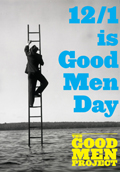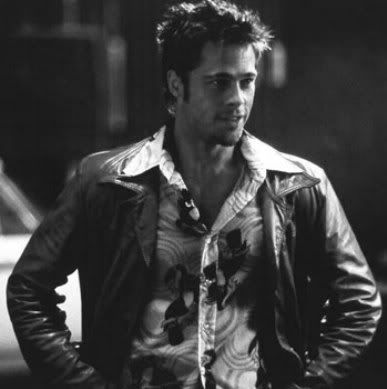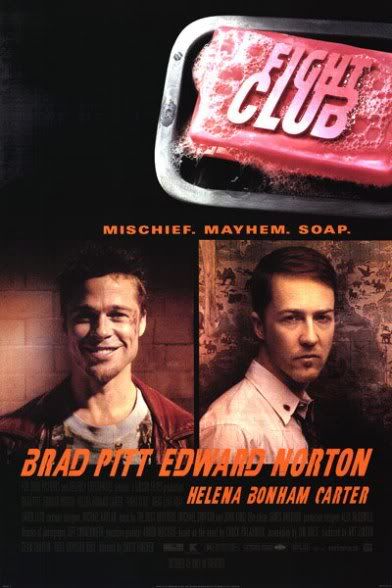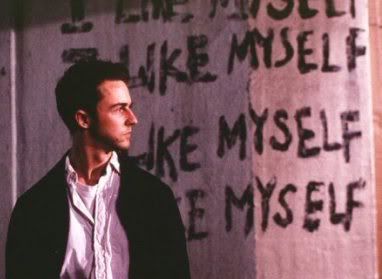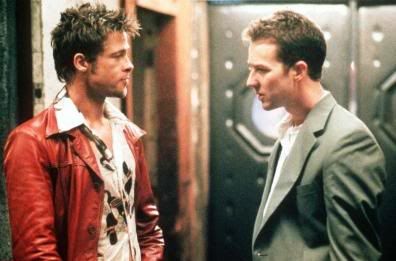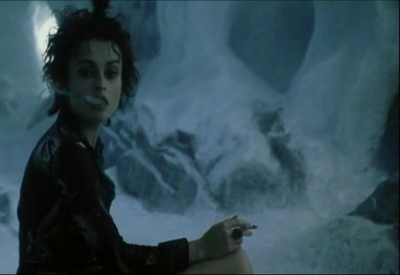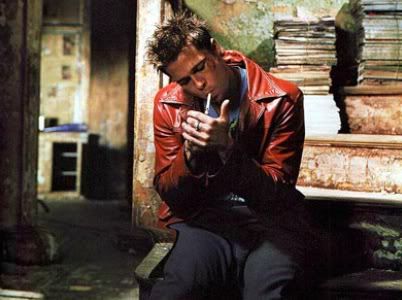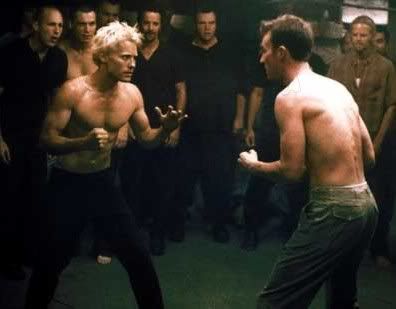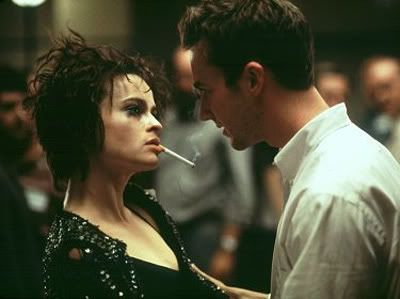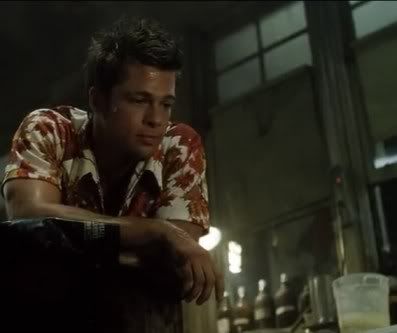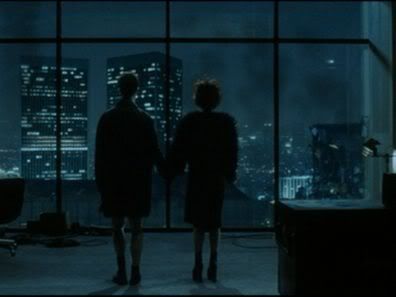On 12/1 we’re spreading the word about The Good Men Project throughout the online universe.
As always, all proceeds from book and dvd sales go to The Good Men Foundation, a registered 501(c)(3) charity that supports men and boys at risk. Charitable organizations such as The Boys & Girls Clubs of Boston, Big Brothers, Big Sisters, Trinity Street Potential, Dorchester Youth Alternative Academy, and Exodus Transitional Community are direct beneficiaries.
And so, on Dec. 1, we’re asking people to help in the following ways:
1. Forward a friendly note about the project to your friends.
2. Post one of our photos on your Facebook Wall. Grab one from Flickr, here.
3. Post a book purchasing link to your Facebook status, your Twitterstream and your web site.
4. Invite your friends to become a fan of The Good Men Project on Facebook
5. Buy the book/DVD combination for yourself or as a gift for others this holiday season. All proceeds go to the nonprofit Good Men Foundation supporting men and boys at risk.
6. If you have a community, religious group, or other non-profit that would be interested in promoting the book or holding a book signing, please contact info@goodmenproject.org
Here is some information about the Book and DVD that you can forward to your friends:
The Good Men Project: Real Stories from the Front Lines of Modern Manhood, is a collection of first-person stories that comprise a book and documentary about what it means to be a man in America today. From Pulitzer winners to ex-cons, and pro Football Hall of Famers to just regular Joes, men share their defining challenges, losses and triumphs through honest and simple truths.
“The hope is that these stories will help men come to their own definition on what it means to be a good man,” says Tom Matlack, Good Men Project cofounder. “It’s about the deeper truth of how men think.”
The book and DVD of the film are available as a companion set, and all proceeds go to the Good Men Foundation, which supports organizations that help at-risk boys. It’s a perfect gift for the men in your life or the women who love them. Be a part of something – join what is fast becoming the centerpiece of a national discussion about what manhood means today.
–
Finally, on 12/1 but also throughout the rest of the holiday season, we’re inviting ANY like-minded charity organization to use our book/dvd as a fundraiser. This is how it works: We have a standard email blast asking people to buy our book/dvd bundle for the holidays. We can track sales by email blast using a promotional code. So we would split the profit on any bundles sold with your unique tracking code. Please contact Tom or Lisa at info@goodmenproject.org if you are interested in learning more about how this effort can help raise money your worthy enterprise or charities, and get the word out about good men.
Monday, November 30, 2009
December 1 Is Good Men Day
Saturday, November 28, 2009
Patrick Stewart: the legacy of domestic violence
No man should EVER be left with so few tools with which to cope with life's challenges that violence feels - in that moment when the frustration or fear rises - as though it is the only option.
Patrick Stewart: the legacy of domestic violence
As a child, the actor regularly saw his father hit his mother. Here he describes how the horrors of his childhood remained with him in his adult life.
- Patrick Stewart
- The Guardian, Friday 27 November 2009
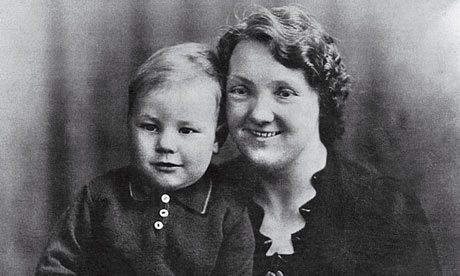
Patrick Stewart as a baby with his mother Gladys. Photograph: Collect
My father was, in many ways, a man of discipline, organisation and charisma - a regimental sergeant major no less. One of the very last men to be evacuated from Dunkirk, his third stripe was chalked on to his uniform by an officer when no more senior NCOs were left alive. Parachuted into Crete and Italy, both times under fire, he fought at Monte Casino and was twice mentioned in dispatches. A fellow soldier once told me, "When your father marches on to the parade ground, the birds in the trees stop singing."
In civilian life it was a different story. He was an angry, unhappy and frustrated man who was not able to control his emotions or his hands. As a child I witnessed his repeated violence against my mother, and the terror and misery he caused was such that, if I felt I could have succeeded, I would have killed him. If my mother had attempted it, I would have held him down. For those who struggle to comprehend these feelings in a child, imagine living in an environment of emotional unpredictability, danger and humiliation week after week, year after year, from the age of seven. My childish instinct was to protect my mother, but the man hurting her was my father, whom I respected, admired and feared.
From Monday morning to Friday tea time he worked as a semi-skilled labourer, and was diligent and sober. Often funny and charming, he was always rich in the personal stories of warfare and adventure that thrilled me. But come Friday night, after the pubs closed, we awaited his return with trepidation. I would be in bed but not asleep. I could never sleep until he did; while he was awake we were all at risk. Instead, I would listen for his voice, singing, as he walked home. Certain songs were reassuring: I'll Take You Home Again, Kathleen; I'll Walk Beside You . . . But army songs were not a good sign. And worst of all was silence. When I could only hear footsteps it was the signal to be super-alert.
Our house was small, and when you grow up with domestic violence in a confined space you learn to gauge, very precisely, the temperature of situations. I knew exactly when the shouting was done and a hand was about to be raised – I also knew exactly when to insert a small body between the fist and her face, a skill no child should ever have to learn. Curiously, I never felt fear for myself and he never struck me, an odd moral imposition that would not allow him to strike a child. The situation was barely tolerable: I witnessed terrible things, which I knew were wrong, but there was nowhere to go for help. Worse, there were those who condoned the abuse. I heard police or ambulancemen, standing in our house, say, "She must have provoked him," or, "Mrs Stewart, it takes two to make a fight." They had no idea. The truth is my mother did nothing to deserve the violence she endured. She did not provoke my father, and even if she had, violence is an unacceptable way of dealing with conflict. Violence is a choice a man makes and he alone is responsible for it.
No one came to help. No adult stepped in and took charge. I needed someone else to take over and tell me everything was going to be all right and that it wasn't my fault. I wanted the anger to go away and, while it stayed, I felt responsible. The sense of guilt and loneliness provoked by domestic violence is tainting – and lasting. No one came, but everyone knew. Our small houses were close together. Every Monday morning I walked to school with my head down, praying that I would not encounter a neighbour or school friend who had heard the weekend's rows. I felt ashamed.
Very occasionally one person would come to our aid – Mrs Dixon, our next-door neighbour, the only person who would stand up to my father. She would throw open the door and stand before him, bosom bursting and her mighty weaver's forearm raised in his face. "Come on, Alf Stewart," she would say, "have a go at me." He never did. He calmed down and went to bed. Now I wish I could take Lizzie Dixon's big hand in mine and thank her.
Such experiences are destructive. In my adult life I have struggled to overcome the bad lessons of my father's behaviour, this corrosive example of male irresponsibility. But the most oppressive aspect of these experiences was the loneliness. Very recently, during a falling-out with my girlfriend, I felt again as though I were shut out and alone, not heard or understood. I was neither, but it was such a familiar isolation that it was almost a comfort and consolation.
I managed to find my own refuge in acting. The stage was a far safer place for me than anything I had to live through at home – it offered escape. I could be someone else, in another place, in another time. However, whenever the role called for anger, fury, or the expression of murderous impulses, I was always afraid of what I might unleash if I surrendered myself to those feelings. It was not until 1981, when the director Ronald Eyre asked me to play the psychotic Leontes in The Winter's Tale, that the breakthrough came.
He quietly told me that the play would only work if I gave myself over, completely and totally, to the delusions, madness and murderousness of this man. "If you do that," Ron said, "I will be at your side. I will be available to you 24 hours a day." From that time forward I was never again afraid of my feelings on stage.
The truth is that domestic violence touches many of us. It is very possible that someone you know – a friend, sister, daughter or colleague – is experiencing abuse. One in four women will experience domestic violence at some point in her lifetime. And every week two women are killed by a current or former partner in England and Wales, and 10 women take their own lives as the only way they know how to escape a violent partner. You are almost certainly paying for it. Domestic violence costs around £26bn a year in medical, legal and housing costs.
This violence is not a private matter. Behind closed doors it is shielded and hidden and it only intensifies. It is protected by silence – everyone's silence. Which is why, in 2007, I became patron of Refuge, the national domestic violence charity. Every day the organisation supports more than 1,000 women and children through its national network of refuges and services. At Refuge, women and children are given psychological support to help them overcome the trauma of abuse. A team of independent legal advocates are on hand to protect women at high risk of violence through the legal process.
Thanks to Refuge's tireless campaigning, attitudes have changed. Police tactics have improved and most men are no longer able to get away with beating women. Yet the statistics still make for grim reading. More than two thirds of the residents in Refuge's network of refuges are children. I cannot express how sad – and angry – it makes me to think that we still cannot ensure the safety of women and children in their own homes.
Most people find the idea of violence against women – and sometimes, though rarely, against men - abhorrent, but do nothing to challenge it. More women and children, just like my mother and me, will continue to experience domestic violence unless we all speak out against it. You can do this by supporting Refuge's latest campaign, Four Ways To Speak Out.
Let us know what you think about how domestic violence victims are supported and protected in this country. Email women@guardian.co.uk or write to Women, The Guardian, Kings Place, 90 York Way, London N1 9GU
Friday, November 27, 2009
Steve Chapman - Romantic Boys Are Not An Oxymoron
I was a wanna-be "player" when I was a young guy, especially as a teenager. But that wasn't who I really was - I was reacting to a culture that valued that behavior. Chemical dependency made it that much easier, since I was usually numb.
We need to make it okay for boys to have their feelings, especially romantic feelings, and reduce the cache in being a "player," a behavior that hurts the girls and also the boys who live that way.
Romantic Boys Are Not An Oxymoron
Don't believe the hype about young American men
Steve Chapman | November 26, 2009
Editor's Note: Steve Chapman is on vacation. The following column was originally published in October 2006.
In the movie Love Actually, a widowed father, played by Liam Neeson, asks his morose grade-school son what's bothering him. Is it his mother's death? Problems at school? Bullies?
"You really want to know?" answers the boy. "Well, truth is—actually—I'm in love." His father is surprised but expresses relief that it's not "something worse." The son fixes him with a look of disbelief: "Worse than the total agony of being in love?"
Prepubescent boys aren't supposed to be tormented by romance, and neither are their adolescent brothers. Popular culture fosters an image of teenage males as shallower than a plasma TV, with little interest in the opposite sex beyond meaningless hookups. We often see them as goatish slaves to their hormones, or as predators eager to exploit the emotional vulnerability of girls.
Some of them no doubt aspire to be cold-hearted players, but not as many as you might think. At least that's the conclusion of Bowling Green State University sociologists Peggy Giordano, Monica Longmore, and Wendy Manning, who took the trouble to ask high school boys to reveal their feelings about romance and got some surprising answers.
This is a mission whose difficulty cannot be overstated. As the father of two college men (as well as a high school girl), I can attest that trying to find out what is going on in the minds, much less hearts, of young males can be like trying to liberate gold from Fort Knox. A casual observer might surmise that the only times their emotions are stirred are when the highlights start on SportsCenter.
But through a combination of computer questionnaires and personal interviews, the three sociologists managed to elicit a good deal of truth-telling about intimate matters. The key finding is that boys place as much importance on romance as girls, though they feel less confident navigating it. They apparently are also just as likely to get all soft and gooey on the subject.
"Boys and girls report similar feelings of love" in a relationship, the authors note in an American Sociological Review article, and those feelings don't hinge on having sex. Beneath the bulletproof manner they affect, a lot of young males have hearts made of cotton candy.
In interviews, guys said things like, "Every time I was around her I couldn't talk, I was getting butterflies in my stomach," and "I wouldn't want to live without Jenny," and "I ain't never, like, felt that way about somebody." One boy recounting a breakup confessed, "I wrote her a letter, front and back, crying the whole time, and then I handed the letter to her the next morning." Another filled up 74 pages recounting his romantic history.
What do these boys value most about their girlfriends? Not their toned midriffs. The interviewers got such responses as, "It was like I could talk to her and she could talk to me," and "She always comforted me when I needed a hug."
These are not the sort of lines you hear in movies aimed at this particular demographic segment, which tend to be heavy on explosions, grossout humor and airborne serpents. But having once been an adolescent male, I can attest that high school boys can fall prey to romantic impulses that would make Anna Karenina look about as passionate as Alan Greenspan. And my experiences as a father don't make me doubt the findings, either.
But wait a minute—aren't these hearty young males, raised in our overly sexualized culture, supposed to be perpetually on the prowl for fleeting conquests in the back seat of a car? In fact, fewer than half of male high school students have lost their virginity. The number of womanizers, Giordano told Time magazine, is "smaller than everybody believes."
Some guys take pride in resisting the pressure to behave that way. "I'd rather focus on one girl than a whole bunch because I don't think that I'm some player or something," one said. Few boys, however, are inclined to share the hearts-and-flowers stuff with their buddies, fearing they are the only ones cursed with tender feelings.
They may be wise to guard their inner lives. But they, and we, should take heart knowing that even in an age of sexual liberation, what makes the world go around, still, is love.
Thursday, November 26, 2009
John Welwood - Intimate Relationship as a Spiritual Crucible

I'm pretty sure I have already posted this great article from Welwood and Shambhala Sun over at IOC (maybe more than once), but here it is again. OK guys, this is the real sh!t - this article lays out what we can aspire to in our intimate relationships.
Read the rest of the article.Intimate Relationship as a Spiritual Crucible
By John Welwood
Living with someone we love, with all the joys and challenges, is one of the best ways to grow spiritually. But real awakening only happens, says renowned psychologist John Welwood, in the charnel ground where we acknowledge and work with our wounds, fears, and illusions.
While most people would like to have healthy, satisfying relationships in their lives, the truth is that everyone has a hard time with intimate partnerships. The poet Rilke understood just how challenging they could be when he penned his classic statement, “For one person to love another, this is the most difficult of all our tasks.”
Rilke isn’t suggesting it’s hard to love or to have loving-kindness. Rather, he is speaking about how hard it is to keep loving someone we live with, day by day, year after year. After numerous hardships and failures, many people have given up on intimate relationship, regarding the relational terrain as so fraught with romantic illusion and emotional hazards that it is no longer worth the energy.
Although modern relationships are particularly challenging, their very difficulty presents a special arena for personal and spiritual growth. To develop more conscious relationships requires becoming conversant with how three different dimensions of human existence play out within them: ego, person, and being.
Every close relationship involves these three levels of interaction that two partners cycle through—ego to ego, person to person, and being to being. While one moment two people may be connecting being to being in pure openness, the next moment their two egos may fall into deadly combat. When our partners treat us nicely, we open—“Ah, you’re so great.” But when they say or do something threatening, it’s "How did I wind up with you?" Since it can be terribly confusing or devastating when the love of our life suddenly turns into our deadliest enemy, it’s important to hold a larger vision that allows us to understand what is happening here.
Relationship as Alchemy
When we fall in love, this usually ushers in a special period, one with its own distinctive glow and magic. Glimpsing another person’s beauty and feeling, our heart opening in response provides a taste of absolute love, a pure blend of openness and warmth. This being-to-being connection reveals the pure gold at the heart of our nature, qualities like beauty, delight, awe, deep passion and kindness, generosity, tenderness, and joy.
Yet opening to another also flushes to the surface all kinds of conditioned patterns and obstacles that tend to shut this connection down: our deepest wounds, our grasping and desperation, our worst fears, our mistrust, our rawest emotional trigger points. As a relationship develops, we often find that we don’t have full access to the gold of our nature, for it remains embedded in the ore of our conditioned patterns. And so we continually fall from grace.
It’s important to recognize that all the emotional and psychological wounding we carry with us from the past is relational in nature: it has to do with not feeling fully loved. And it happened in our earliest relationships—with our caretakers—when our brain and body were totally soft and impressionable. As a result, the ego’s relational patterns largely developed as protection schemes to insulate us from the vulnerable openness that love entails. In relationship the ego acts as a survival mechanism for getting needs met while fending off the threat of being hurt, manipulated, controlled, rejected, or abandoned in ways we were as a child. This is normal and totally understandable. Yet if it’s the main tenor of a relationship, it keeps us locked in complex strategies of defensiveness and control that undermine the possibility of deeper connection.
Thus to gain greater access to the gold of our nature in relationship, a certain alchemy is required: the refining of our conditioned defensive patterns. The good news is that this alchemy generated between two people also furthers a larger alchemy within them. The opportunity here is to join and integrate the twin poles of human existence: heaven, the vast space of perfect, unconditional openness, and earth, our imperfect, limited human form, shaped by worldly causes and conditions. As the defensive/controlling ego cooks and melts down in the heat of love’s influence, a beautiful evolutionary development starts to emerge—the genuine person, who embodies a quality of very human relational presence that is transparent to open-hearted being, right in the midst of the dense confines of worldly conditioning.Relationship as Charnel Ground
To clarify the workings of this alchemy, a more gritty metaphor is useful, one that comes from the tantric traditions of Buddhism and Hinduism: relationship as charnel ground. In many traditional Asian societies, the charnel ground was where people would bring dead bodies, to be eaten by vultures and jackals. From the tantric yogi’s perspective, this was an ideal place to practice, because it is right at the crossroads of life, where birth and death, fear and fearlessness, impermanence and awakening unfold right next to each other. Some things are dying and decaying, others are feeding and being fed, while others are being born out of the decay. The charnel ground is an ideal place to practice because it is right at the crossroads of life, where one cannot help but feel the rawness of human existence.
Chögyam Trungpa Rinpoche described the charnel ground as "that great graveyard, in which the complexities of samsara and nirvana lie buried." Samsara is the conditioned mind that clouds our true nature, while nirvana is the direct seeing of this nature. As Trungpa Rinpoche describes this daunting crossroads in one of his early seminars:
It’s a place to die and be born, equally, at the same time, it’s simply our raw and rugged nature, the ground where we constantly puke and fall down, constantly make a mess. We are constantly dying, we are constantly giving birth. We are eating in the charnel ground, sitting in it, sleeping on it, having nightmares on it... Yet it does not try to hide its truth about reality. There are corpses lying all over the place, loose arms, loose hands, loose internal organs, and flowing hairs all over the place, jackals and vultures are roaming about, each one devising its own scheme for getting the best piece of flesh.
Many of us have a cartoon-like notion of relational bliss: that it should provide a steady state of security or solace that will save us from having to face the gritty, painful, difficult areas of life. We imagine that finding or marrying the right person will spare us from having to deal with such things as loneliness, disappointment, despair, terror, or disintegration. Yet anyone who has been married for a long time probably has some knowledge of the charnel ground quality of relationship—corpses all over the place, and jackals and vultures roaming about looking for the best piece of flesh. Trungpa Rinpoche suggests that if we can work with the "raw and rugged situation" of the charnel ground, "then some spark or sympathy or compassion, some giving in or opening can begin to take place. The chaos that takes place in your neurosis is the only home ground that you can build the mandala of awakening on." This last sentence is a powerful one, for it suggests that awakening happens only through facing the chaos of our neurotic patterns. Yet this is often the last thing we want to deal with in relationships.
Trungpa Rinpoche suggests that our neurosis is built on the fact that:
…large areas of our life have been devoted to trying to avoid discovering our own experience. Now [in the charnel ground, in our relationships] we have a chance to explore that large area which exists in our being, which we’ve been trying to avoid. That seems to be the first message, which may be very grim, but also very exciting. We’re not trying to get away from the charnel ground, we don’t want to build a Hilton hotel in the middle of it. Building the mandala of awakening actually happens on the charnel ground. What is happening on the charnel ground is constant personal exploration, and beyond that, just giving, opening, extending yourself completely to the situation that’s available to you. Being fantastically exposed, and the sense that you could give birth to another world.
This also describes the spiritual potential of intimate involvement with another human being.
Another quote with a similar feeling comes from Swami Rudrananda (known as Rudy, a German teacher who was a student of the Indian saint Swami Nityananda), further describing how to work with neurosis in this way:
Don't look for perfection in me. I want to acknowledge my own imperfection, I want to understand that that is part of the endlessness of my growth. It’s absolutely useless at this stage in your life, with all of the shit piled up in your closet, to walk around and try to kid yourself about your perfection. Out of the raw material you break down [here he is also speaking of the charnel ground] you grow and absorb the energy. You work yourself from inside out, tearing out, destroying, and finding a sense of nothingness. That nothingness allows God to come in. But this somethingness—ego and prejudices and limitations—is your raw material. If you process and refine it all, you can open consciously. Otherwise, you will never come to anything that represents yourself … The only thing that can create a oneness inside you is the ability to see more of yourself as you work every day to open deeper and say, fine, “I’m short-tempered,” or “Fine, I’m aggressive,” or, “Fine, I love to make money,” or, “I have no feeling for anybody else.” Once you recognize you’re all of these things, you’ll finally be able to take a breath and allow these things to open.Rudy suggests that we have to acknowledge and embrace our imperfections as spiritual path; therefore grand spiritual pretensions miss the point. In his words, "A man who thinks he has a spiritual life is really an idiot." The same is true of relationships: beware of thinking you have a “spiritual relationship.” While loving connection provides a glimpse of the gold that lies within, we continually corrupt it by turning it into a commodity, a magical charm to make us feel okay. All the delusions of romantic love follow from there. Focusing on relationship as a spiritual or emotional “fix” actually destroys the possibility of finding deep joy, true ease, or honest connection with another.
Sooner or later relationship brings us to our knees, forcing us to confront the raw and rugged mess of our mental and emotional life. George Orwell points to this devastating quality of human love in a sentence that also has a charnel ground flavor to it: “The essence of being human is that one does not seek perfection, and that one is prepared, in the end, to be defeated, and broken up by life, which is the inevitable price of fastening one’s love upon other human individuals.”
This then is the meaning of the charnel ground: we have to be willing to come apart at the seams, to be dismantled, to let our old ego structures fall apart before we can begin to embody sparks of the essential perfection at the core of our nature. To evolve spiritually, we have to allow these unworked, hidden, messy parts of ourselves to come to the surface. It’s not that the strategic, controlling ego is something bad or some unnecessary, horrible mistake. Rather, it provides the indispensable grist that makes alchemical transformation possible.
Wednesday, November 25, 2009
In Japan, 'Herbivore' Boys Subvert Ideas Of Manhood (NPR)
On the other hand, maybe these brave young men (it's always an act of bravery to subvert tradition) will create a space in which others can be be masculine without being slaves to tradition.
November 25, 2009
Yasuhito Sekine is a member of a new generation of mild-mannered, sensitive Japanese men
known as "herbivores." He runs an online dessert club for men — something he says
would have been unthinkable 20 years ago.November 25, 2009The sensitive New Age man has finally arrived in the land of the salaryman. But there is a catch — a particularly important one in Japan, where the declining birthrate has caused alarm: The new Japanese man doesn't appear to be interested in women or sex.
In Tokyo on the weekends, the trendy area of Harajuku is a melting pot of urban tribes: Lolita goths bat their fake eyelashes, while the punks glower.
Away from the strutting are the retiring wallflowers, a quiet army of sweet young men with floppy hair and skinny jeans. These young men are becoming known as Japan's "herbivores" — from the Japanese phrase for "grass-eating boys" — guys who are heterosexual but who say they aren't really interested in matters of the flesh.
They are drawn to a quieter, less competitive life, focusing on family and friends — and eschewing the macho ways of the traditional Japanese male.
They include men such as Yukihiro Yoshida, a 20-something economics student, who is a self-confessed herbivore. "I don't take initiative with women, I don't talk to them," he says, blushing. "I'd welcome it if a girl talked to me, but I never take the first step myself."
Multiple recent surveys suggest that about 60 percent of young Japanese men — in their 20s and early 30s — identify themselves as herbivores. Their Sex and the City is a television show called Otomen, or Girly Guys. The lead character is a martial arts expert, the manliest guy in the whole school. But his secret passions include sewing, baking and crocheting clothes for his stuffed animals.
"I will hide my true nature," he vows in the first episode, as he sews secretly, shut away in his living room. "At all times, I will be a man — a real Japanese man," he says.
But what does that mean?
"It's not so much that men are becoming more like women. It's that the concept of masculinity is changing," says Katsuhiko Kokobun. From his perch at Guzzle, the popular Harajuku hair salon he owns, Kokobun is at the front line of the latest trends.
Over the years, he has seen more and more men coming into the salon — men who he describes as "more modest, less demanding, kind of passive; they accept what they're told." He's noticed that nowadays they're demanding more traditionally female treatments. "We do have eyebrow plucking and facials for men," he says, smiling. "Eyebrow plucking is very popular among high school boys."
It is, perhaps, no coincidence that Yasuhito Sekine's eyebrows are perfectly groomed. The changing tastes of Japanese men are quite literally what take up his days. He works for an Internet service provider and operates Sweets Club, an online group for men who like desserts. Set up in January, it already has about 1,000 members who congregate — online and in person — to debate the virtues of different brands of strawberry shortcake. It's something that Sekine says would have been unthinkable 20 years ago.
"Back then, lots of men liked desserts, but it was considered uncool. Cool men had to like alcohol or spicy food. I've discovered my father likes eating dessert, but he never showed it in the past," Sekine says.
Put through his paces with an impromptu taste test, Sekine praises peach gelatin as fresh-tasting. He is not so keen on coffee gelatin with cream — a macho dessert if ever there was one — labeling it "retro." He believes his dessert club shows that young Japanese men are asserting their individuality, reflecting a change in values from Japan's booming 1980s.
"Back then, Japanese men had to be passionate and aggressive, but now those characteristics are disliked. Our members have very mild personalities. They simply enjoy what they like without prejudice. They are not limited by expectations," Sekine says.
Japan's top expert on herbivores, Maki Fukasawa, believes they were born from the lost decade of economic stagnation. She christened the tribe in 2006 and recently wrote a book called The Herbivore Generation, which breaks herbivores down into 23 distinct subcategories. She argues that the herbivores are rebelling against the salaryman generation of their fathers, consciously turning away from the macho mores and conspicuous consumption of that era.
"They have some feelings of revulsion towards the older generation," says Fukasawa. "They don't want to have the same lives. And the impact of the herbivores on the economy is very big. They're such big news now because sales are down, especially of status products like cars and alcohol."
She says the advent of the herbivores could bring positive changes. Herbivores may lack ambition, but they are driven by a strong sense of community and family, which she believes many of them lacked while growing up.
"In a sense, their fathers neglected their families. They were involved in Japanese-style salaryman lifestyles, going out with their bosses every night, while herbivores are closer to their families and friends," Fukasawa says.
But there are fears about the financial and social impact of herbivores. Their low levels of spending and lack of interest in sex invoke two of Japan's biggest problems: its lackluster economy and declining birthrate. Herbivores like to be friends with women — but for many, that's as far as it goes.
In the streets of Harajuku, Alex Fujita explains why he is not interested in taking it any further.
"Nowadays, women have more education and enjoy working. Women are scary now," he says.
And, of course, there is a name, too, for the economically empowered working Japanese women who know what they want: the carnivore women. With herbivore boys and carnivore girls, it seems the land of samurai, sumo wrestlers and geisha girls is remaking its gender landscape anew.
Tuesday, November 24, 2009
Kim Morgan - "Fight Club" Ten Years Later
I thought then, and still think, that the film captured a degree of how lost so many Gen X men were in the 1990's (and may still be lost today). However, rather than posing an evolutionary perspective or a new masculinity, it shows men reverting to a more primitive version of masculinity - when you've been emasculated by your culture, you fight and f*ck and stage a revolution against those by whom you feel betrayed.
The solution is not the answer, but it makes for a thought-provoking film. And, by the way, there is also some meditation on the nature of the self in the "relationship" between Tyler and Jack.
Fight Club Ten Years Later
Kim MorganPosted: November 19, 2009 06:43 PMIf any picture was the movie to usher in the new millennium, it was David Fincher's Fight Club. To me, it was the movie of the 1990s -- as prescient as Network was in the 1970s towards the future of "news," and as equally misunderstood. As Fight Club revealed and essentially, proselytized, we live in a world where we seek to express ourselves, either through conspicuous consumption, or following philosophies for supposed betterment, or to simply remember what it was like to actually feel like a man after the world has feminized us so (something as a woman I find frustrating and heartbreaking -- let men be men again).
But Fight Club isn't saying something as simple and inane as men are pussies. It's not a dumb jock statement of being a "man." Rather, it shows how through the alienation of social institutions, and the de-masculination of culture, the rugged individualist is rare. How to tap into being a man, fast? "Punch me as hard as you can."
Based on the diabolical novel by Portland's Chuck Palahniuk (skillfully adapted by Jim Uhls), Fight Clubis a multifaceted satire. It attacks not only the dehumanizing, corporate Starbucks/Ikea world we inhabit (and still inhabit -- even more), but also self-help philosophies, men's movements, commercials, TV and, interestingly, movies, but oh-so cleverly. The way cinema is blamed for contributing to real-life violence is not only woven into the picture, but it became a reality lobbed at the movie upon release. Like A Clockwork Orange, Fight Club was considered fascist by some critics, that it would encourage men to fight (not always a bad thing), and that it might actually create fight clubs (which it did -- not always a good thing).
A movie that ends on man and woman watching two high rise office towers tumbling down from the skyline before the World Trade Center's collapse is creepy, scary prophetic. As Tyler Durden proclaims: "Advertising has us chasing cars and clothes, working jobs we hate so we can buy shit we don't need. We're the middle children of history, man. No purpose or place. We have no Great War. No Great Depression. Our great war is a spiritual war. Our great depression is our lives. We've all been raised on television to believe that one day we'd all be millionaires, and movie gods, and rock stars, but we won't. We're slowly learning that fact. And we're very, very pissed off." And...then through the 2000s? A war. And an economic crisis.
Then, to a certain extent, Fight Club took on Generation X, but it also applied to the onset of the next generation. Challenging so many silly articles, books and movies that have attempted to label "Generation X" as listless, flannel-wearing, grunge-listening slackers, the film argued that it's not a lack of passion that kept those in their late twenties to early thirties befuddled, but a lack of personal power, a lack of freedom -- the impotence of not knowing your real soul.
Revealing the absurdity, hilarity and sadness of the type of man who, for example, would sit at home and listen to self-help Guru Anthony Robbins instructing him on how to "awaken the giant within," then go through the motions, and achieving nothing -- Fight Club asks: Do you want to awaken your giant? Do you really want to look inside yourself? What if your giant turns into a monster?
Fight Club begins with a character who is always awake (in fact, he can never sleep) but is certainly no giant --not yet, anyway. The film's insomniac narrator, "Jack" (Edward Norton), like so many of his generation, is full of cynicism but mild-mannered and desperately searching for something -- anything. When he becomes fed up with sleepwalking through his job at a major automobile manufacturer (where, he says, everything looks like "a copy of a copy of a copy"), Jack finally goes to a doctor and begs for sleeping pills. The doctor tells him to quit his whining -- if he really wants to see suffering, he should go to a support group for testicular-cancer survivors. Good idea? Not really for Jack. He soon becomes addicted to every support group he can locate. They become the outlet he's needed for his confounded emotions; he does receive the attention he craves, and he can finally sleep, but he's really just a support group tourist.
His warm fuzzy, self help universe spell is broken when another tourist enters. That's Marla (Helena Bonham Carter), a chain-smoking accidental-overdose-waiting-to-happen who attends meetings because (as she says) "it's cheaper than a movie, and the coffee is free." Jack sees himself reflected in her perverse presence; he hates her, which means he hates himself. They are both fakes.
And then the epiphany: During a plane trip, he meets eccentric soap maker Tyler Durden (Brad Pitt), he returns home to find his condo has blown up and, desperate, he rushes to, of course, Tyler. He lives in the "dilapidated house in a toxic-waste part of town" -- and never leaves.
In Tyler, he finally finds the "power animal" that his original cancer-support group instructed him to get in touch with. Tyler teaches him Nietzschean ideals of freedom and puts him in tune with his manly center -- his hunter. And even more importantly, Jack and Tyler fight: Their fights are sweaty, bloody, I want-to-throw-my-desk-at-my-boss releases of rage, submerged eroticism and enlightenment. And men are intrigued. Watching Tyler and Jack's parking-lot brawls creates a new form of therapy for men, and as we well remember, they organize their beat-downs into the movement and philosophy of "Fight Club." As members grow and chapters sprout up in different cities, the club morphs into something called "Project Mayhem" -- a terrorist revolution that encourages members to spread to the outside world -- vigilante/philosophical style with charismatic Tyler as leader of the revolution. In Tyler they trust. His leadership, their trust and their acts become morbidly funny, increasingly frightening and oddly inspiring.
Fincher's brilliant fusion of style and substance created an exciting, thought-provoking, bloody experience that was worshiped, studied and criticized for its controversial takes on moviemaking, manhood, violence and corporate culture. Again, like Stanley Kubrick's A Clockwork Orange, Fight Club articulates the darkness (and humor) of those who don't want to feel numb anymore while, simultaneously, commenting on the powers that made them numb in the first place. And like Kubrick's film, Fight Club was considered dangerous, a film that incites violence or promotes nihilism.
And this seemed to be exactly what Fincher wanted. The more fingers wagged at him, the more his point was proven: It's easier to pin society's ills on entertainment, then look out into the real world or (gasp) within oneself. (Even if our therapist continues to say: "you're doing great....you're doing great.") Fincher's other masterpiece, Zodiac, also touched on this -- defying what was expected of him, Fincher made a movie about obsession and didn't simply satiate our desire to watch yet another serial killer movie.
But, like all of Fincher's movies, the picture also works as supreme entertainment -- especially because master prankster Tyler is "form of"... Brad Pitt. Does the picture take Tyler's side? In many ways, yes. Though the movie pokes fun at the men who join Tyler, it understands their pain, and it understands that their pain has been sold out to self-help groups that do them no good. In the transformation from "Fight Club" to "Project Mayhem," the members merely shift their anger from each other to the outside world -- the soul-deadening culture that has merged New Age spirituality with consumerism, hiding dehumanization behind politically correct calm. As Tyler explains, "Self-improvement is masturbation...self-destruction might be the answer."
And yet, the picture understands that the answer is too simple; it can only lead to further confusion. Because Fight Club is essentially a satire, it knows that though Tyler's eloquent assertions make sense, and are emboldening, they will become borderline fascistic and not entirely reliable. Still, I couldn't help feeling moved by its muscular assertions. When Tyler declares to a terrified fat cat, whose face has been duct-taped courtesy of Project Mayhem: "We are the people who take out your garbage...we watch over you while you sleep...DO NOT FUCK WITH US!" I'm all Kick-out the-Jams-motherfucker, Fight-the-power exhilarated.
What I admire about Fight Club, is that it never denies that violence can be glamorous. Fincher shows that a fight can be a vital part of life, that a violent act can be horrifying, but weirdly fun and sometimes necessary. It can be a soul-altering experience, it can liberate. But it can also, as the picture artfully complicates by not strictly advocating violence, destroy and entrap one with feelings of paranoia and pain.
Fincher reached new levels in filmmaking, not only by his wink-wink take on violence, but also his wink-wink take on exploiting his own arena of expression: cinema, or rather the corporate world of cinema. Like the pranksters he's chronicling, Fincher had bitten the hand that fed him. He knows the commercial Hollywood system. He knows how to take a successful franchise like Alien, or an ideal hunk like Pitt (something he also deconstructed in The Curious Case of Benjamin Button) and turn it into something subversive, because, as much(or more) than any traditional "indie" director would, he understands the system he mocks. When Tyler yells at his Project Mayhem recruits that they will never be movie stars, the scene works as both a hard truth and as a deconstruction of the movie ideal. Tyler/Pitt is the ideal movie star we all want to be, but should we listen to him?
Yes and no. The film is cynical enough to show that a New World Order like Tyler and Jack's can lose control of itself. Yet the movie doesn't deny that such a "second coming" is attractive and, in ways, beneficial. After all, what is more powerful: movie stars putting knuckles to skin, or fleshy nubs munching scones and itemizing reports? And watching Fight Club, ten years later, with all that we have available to us, it seems even more prescient. For better and often for worse, we've become even more disconnected from ourselves. And even more narcissistic. People text, they twitter, they communicate online instead of talk on the phone or in person. They create alternate identities and pretend to be tough in, of all places, chat rooms, and blogs. Can you imagine a flame war in a biker bar? It's no surprise Fincher's now making a movie about the social networking site Facebook. Tyler Durden would now be a viral creation.
Filled with so many potent comments on society that it demands more than one, two, three viewings, Fight Club is a challenging and powerful work of art that sticks in both the primal and the intellectual parts of one's brain and, for many of us, will never be dislodged -- not even by a sucker punch.
Read more Kim Morgan at her site, Sunset Gun.
Monday, November 23, 2009
Responses to "A New Vocabulary for Men"
His argument was that men have been hit hard by this particular recession and that we need to be able to feel the pain and anger - and sadness - that come with job loss and economic struggles - in fact we might even want to support each other through men's groups.
Not every seems to agree.
Go read more of the comments he received about his article.The savage intensity and tender vulnerability men and women feel about gender issues came out in response to last week’s article, "A New Vocabulary for Men," about new efforts to support men during this emotionally battering economic downturn, which some are calling a “mancession” since so far it’s been hitting North American males harder than females.
Most of the comments had an openness and honesty missing from much of this blog's more customary commentary on religious, spiritual or ethical issues, as reader Billy Pilgrim accurately noted. Itwas also interesting to hear from Freemason Jack Barr (33rd degree) about how his organization has in its own way been trying to support "good" men for centuries.
I’ll just respond to a few of the offerings the blog has received from men and women. The issues surrounding gender could become a lifelong study. It is endlessly fascinating and provocative, for good reason. Much is to be learned from understanding what Carl Jung would call the ‘feminine’ and ‘masculine’ parts of our society and ourselves. I’ll begin with the most bitter responses. The readers' comments are in boldface, with my responses in italics.
SEADAWG59 said:
{I’ve cleaned up the spelling. DT}
“We all have ambitions and many of us will not succeed in gaining them. The article is a lot of crock, if you don’t like your job quit look for another job that you do like. There is an old military adage, tough t**** said the kitty but the milk is still good.”
Douglas responds: I could be wrong about the gender, but Seadawg seems to be an old-fashioned male. He believes life is all about sucking it up and being tough and not showing one’s emotions, certainly not grief, fear or sadness. Only anger and repression is allowed in “seadawg59’s” real-male world. There is something to be said for being strong in the face of adversity, but I find “seadawg59s” emotional authoritarianism to be chilling. DT
Here’s something from "Damned Straight," showing how, for some women, rage at men remains dominant. Although clearly intelligent, Damned Straight's comments offer a very disturbing insight into how far (some) women and men need to go to come to any hint of mutual understanding and appreciation.
DAMNED STRAIGHT says:
"Quote from article: 'Many have been calling it a "mancession." The word has been coined because this recession is hitting North American and European male workers far harder than female employees.'
Who are you kidding?
Women still inhabit most of the lowest paid jobs in Canada, not to mention it's mostly women who are in temporary, part time or casual jobs in Canada. Most women also hit the glass ceiling, never hoping to make anything near $300,000 a year, no matter how qualified they are. Women are always at the lowest rungs in employment, during good times and bad. Even in bad times men still get higher paying jobs than women, because other men are still willing to hire them, over women.
Most people of power in Canada are men. Top politicians, top union leaders, top CEO's, and it goes on and on. Everywhere you go the men are in charge.
Douglas Interjects: Damned Straight has not provided any statistical data for her “facts,” other than we know most “top” figures in politics and big business are males. What about all those males who are also low-paid, many doing unpleasant or dangerous work? There is a cold, furious lack of empathy from Damned Straight for average men and their issues. For her it’s about blaming – all men. DT
What's the Alternative to Tucker Max? - Rejecting Toxic Masculinity
If you would like to learn how to lead a men's group, Jayson his buddy Tripp can help you out.
(Flickr/Lisa Norwood)
Vote for Courtney Martin in The Washington Post's Next Great Pundit contest.
"Machismo!" shouted a young college student in the third row.
"Tough!" "Violent!" "Homophobic!" shouted three other young men, sprinkled throughout the packed lecture hall. Ethan Wong, a student at St. John's University in Collegeville, Minnesota, who was dressed in a slim business suit, nodded as he wrote each word on the chalk board.
The roomful of young men was brainstorming all the qualities associated with masculinity. Wong was one of the organizers of the National Conference for Campus-Based Men's Gender Equality and Anti-Violence Groups, a long and clunky name for an unprecedented event that took place last weekend at his school. It was the first time that young guys from around the country -- guys like Wong, who recognize that the kind of masculinity they are describing is toxic for men, too -- gathered to share strategies for getting college men involved in gender-based activism and discuss the work ahead.
In attendance were about 200 individuals, representing 40 colleges and two dozen organizations, many of them sporting titles like Center Against Sexual and Domestic Abuse, Men Can Stop Rape, and Men Stopping Violence. Notice a trend here? This contemporary movement of gender-conscious young men is largely identifying themselves in terms of what they are against. They're not rapists. They're not misogynists.
They're also not particularly effective in imagining what they do want to be. Case in point: back to Wong at the chalkboard. The negative associations with masculinity poured off the tongues of these feminist-friendly college kids. They've taken Women's Studies 101. When their buddy says, "That's so gay," they spit back, "That's a sexual identity, not a dis." They let a few tears fall during the Take Back the Night March. They devour Michael Kimmel's Guyland and proselytize about Byron Hurt's documentary, Hip Hop: Beyond Beats and Rhymes. This generation is saying no to toxic masculinity.
But what are these young men saying yes too? We've all failed to envision an alternative.
This became painfully clear over the course of the weekend as speakers and students grappled to find what one presenter referred to as a "feminist masculinity." Is there such a thing? Does it look like President Barack Obama -- or does his insistence on talking about sports and drinking beers reveal that he's just one of the guys? Does it look like KRS-1, the veteran rapper who recently said that hip-hop needs more women -- or is his statement too little, too late? Stephen Colbert, in some ways, is the closest thing we've got. He consistently lampoons misogynist punditry and policy, yet his "feminist masculinity" is only visible vis-à-vis its blowhard foil.
We've certainly got plenty of pictures of men who are stubbornly clinging to the old paradigm of maleness, and sadly, they're not acting -- think Tucker Max and Bill O'Reilly. The men's rights movement is making reclaiming traditional manhood a compelling project for young, lost men. These activists know how to paint a vivid, if delusional, picture of the kind of man who will overcome victimization at the hands of all of us hateful feminists: He's righteous, he's fighting back, and most important, there's nothing feminine about him. He is the opposite of female in every way.
While it's thrilling that there is also a movement of young men all who want to tear down the patriarchy right alongside women, it's dangerous that they don't have a clear picture of what they want to build in its place. At the conference, one young man spoke up against the notion of a new "feminist masculinity," explaining that he feared it would be one more box that young men felt they had to fit into. There's a lot of validity to his argument, but I fear that the old adage is true: We can't be what we can't see. Models help us try on various identities and find one that is truly authentic. The more publicly feminist-aligned men we have, the more opportunities the next generation has to find a positive, masculine gender identity that actually fits.
Many young men, it seems, are stuck in stage one of gender consciousness. They want to prove that they are one of the "good ones" and separate themselves from all the gendered behaviors and beliefs that they now see as oppressive. That, or they wallow in guilt. (This is not unlike the stage many white kids get stuck in upon fully realizing their role in perpetuating racism.) At worst, this point of view is paralyzing. At best, it leads to burnout. It's not until privileged folks, men in this case, can own the ways in which they have a self-interest in resisting systems of oppression that their work becomes sustainable.
This is about so much more than the 200 men who attended this conference. They are on the front lines, but there are legions of progressive men of all ages, all over the country who are struggling to redefine masculinity and live that redefinition every day. They fumble without models but continue on because they know that there is so much to be gained. Guys who reject traditional masculinity, for starters, have a greater chance of finding fulfilling work that isn't just a symbol of their provider status. They might explore the joy of relationships -- being nurturing with their kids, real with their friends, open with their partners. They have the opportunity to shed their socialized skin and all the anxiety that comes with trying to be a "tough guy" and make a happy life defined, not by their paycheck or their size, but by their humanity.
Fighting against the world that we don't want is a critical first step, but fighting for the world that we do want is where liberation truly begins.
Sunday, November 22, 2009
Taking Care of Your Shoulders
But as anyone who has been lifting weights for any length of time can tell you, eventually nearly everyone will develop shoulder pain at some point. I have had my share, despite doing everything I know to prevent injuries.
With this in mind, maybe I can offer you all some information that may help you prevent your own injuries. Most importantly, here is some info from Eric Cressey, an expert in prevention and rehab.
As many of you know, Mike Reinold and I put on a seminar that was “everything shoulder” this past Sunday at Cressey Performance. The event sold out within 36 hours back when we first announced it in early October, and we had strength and conditioning and rehabilitation specialists come from the likes of Canada, Texas, and the Midwest on only a month’s notice. Our goal was to keep the seminar more intimate to allow for more speaker-attendee interaction, Q&A, and easy viewing - as we also recorded the event on DVD.
While production won’t be complete until December at the earliest, I thought I’d give my loyal readers a little taste of some of what was discussed on Sunday. Our primary goals were to introduce some current concepts in evaluation of both symptomatic and asymptomatic populations as well as ways to treat/train them during and after injury. Above all else, we wanted to show how rehabilitation specialists and strength and conditioning specialists could work hand-in-hand to improve outcomes - but that this successful interaction hinged on whether all parties involved were willing to commit to learning about how the shoulder functions.
You can call this my “Random Thoughts” for the week:
1.The side-lying external rotation (SLER) has the highest EMG of any rotator cuff exercise, and the adducted position is the safest position for most “testy” shoulders. So, if you have to pick one cuff exercise to get you a safety and a great return on investment, roll with the SLER:
2. Simply providing a small amount of “propping” to put the humerus in a slightly more abducted position actually increases EMG of the posterior rotator cuff muscles by 23%.
3. Shoulder evaluations rarely work completely independently of one another. For example, poor thoracic spine mobility directly impacts function of the scapula and, in turn, range of motion at the glenohumeral joint. So, rather than hanging your hat on 1-2 assessments, you need a barrage of assessments that cover glenohumeral range-of-motion, scapular stability/positioning, thoracic spine mobility, breathing patterns, and forward head posture. Then, once you’ve got all your information, you can look at each test as one piece in an individualized puzzle.
4. There are a ton of superior labrum anterior-posterior (SLAP) tests out there. It’s because none of them are particularly great - but the better ones out there simulate the injury mechanism (e.g. pronated load and resisted supnation external rotation tests for overhead throwing athletes).
Read the whole article.
This article comes from the Staley Training Systems site, offering the best body weight exercise from shoulder strength.
Read the rest of the article.Handstand Push-Ups - The BEST Shoulder Exercise You Can Do
By Nick Nilsson
Author: Fitness-eBooks
Creator: Powerful Training Secrets
The Handstand Push-Up is, in my opinion, THE single most effective shoulder exercise you can do. The mechanics are exactly like a regular shoulder press but, since you're moving your bodyweight through space, you active the shoulder muscle fibers far more.For myself, shoulders have always been my weakest link. I can't do much on the barbell press without having shoulder pain. Dumbells are better but I lose strength in that lift quickly if I don't keep up with it.
Then I tried Handstand Push-Ups. The first few times I did them, I had a spotter, grab my legs and hold me up. If you're not experienced with kicking up into a handstand, you may want to try that.
This is a TOUGH exercise, just fyi. You'll have to have strong shoulders at the outset to be able to even perform one rep. But the payoff is HUGE. It'll not only build ridiculous shoulder strength, it'll develop balance and athleticism at the same time.
So here's the handstand push-up and how to do it...
Do a handstand beside a wall so that your feet are in contact with it (see the Kick Up section below). Your hands will be a little wider than shoulder width. Lower yourself until your head touches the ground then push up.
The Kick Up:
Place your hands about 3 inches away from the wall. Your starting position will be similar to a sprinter's at the start of the race. The leg you will push up with is the one that is furthest back.
Bounce down a little then explode your legs up. I like to do it with split legs, catching the wall with the bottom of one foot to slow things down without smacking my heels. Once you're up, straighten your legs - that's the top position!
The kick up requires practice to be able to do efficiently and without smacking your heels against the wall. Wear shoes when practicing! Practice it a few times to get the hang of it. You want to do it on a mat or other padded surface the first few times.
Ensure you keep your elbows locked out or very close to it, and your elbows are stiff. This will prevent you from crashing down on your head, especially the more sets you do (even more so with negative reps). Practice with both feet to see which feels more comfortable. If you get more comfortable with one, it is still not a bad idea to practice with the other one as well.
Now, once you're in the top position, it's a simple (yeah, simple!) matter of doing the push-up.
Lower your head to the floor then push yourself directly back up.
Move your mouse on an off this picture below to see it in action.
Once you've done as many reps as you can, it's time to come back down.
The way down is just the opposite from the kick-up. My preference is again, split up the legs so that you're basically dropping one leg down, then the other. This helps me keep balance and cushion the landing. Once the first foot is down, the other is already on the way. The video shows this quite well.
Tricks:
1. To focus on the delts more, turn your hands inward somewhat so that your fingers are pointing at each other a little (not too much).
2. A spotter can be used to hold your body upright and to help pull you up if you need it. If you want to add resistance, get a spotter to push down on your legs.
3. A great way to improve your pushing power is to do them with a bottom-stop. At the bottom of each rep, let your body weight rest mostly on your head, releasing much of the tension off your shoulders. This will eliminate any elastic force you may have in your muscles. This has the added effect of building up your neck muscles. At that point, develop tension in the delts then push up explosively.
4. Splay your fingers out as wide as possible. This will help with controlling your motion. It will also improve hand strength. Don't have your fingers flat on the floor, however. Keep them bent so that you can exert force. It will make your hands resemble a claw.
Friday, November 20, 2009
LA Times - Turns out, all Andre Agassi needed was . . . love
Yet his story confirms what many of us already know - a solid, loving, supportive relationship can give us the space to heal old wounds and get ourselves healthy. Seems that is what happened for Agassi.
Turns out, all Andre Agassi needed was . . . love
His harrowing autobiography notwithstanding, the tennis great appears to have achieved inner peace. Steffi Graf and their kids are a big part of that.
By Diane Pucin
November 18, 2009
Andre Agassi is asked whether he is happy right now.
As he sits in an empty room at the Beverly Wilshire Hotel, doing his part to promote his new autobiography "Open," looking forward to Thanksgiving in Las Vegas with the love of his life, Steffi Graf, with an outgoing 8-year-old son, Jaden, who is an aspiring baseball player and with an introspective 6-year-old daughter, Jaz, Agassi doesn't exactly answer the question.
"I find peace every day," he said Tuesday. "I try to enjoy the day, get the most out of each intersection."
Agassi's painfully honest book details what he calls his "love-hate" relationship with tennis, the sport that brought him fame and adulation but also was born of a tumultuous relationship with his hard-driving father, Mike.
In the book Agassi revealed that he had used the drug crystal meth in 1997 and failed an ATP tour drug test. Agassi's explanation -- he said he had accidentally ingested the drug by sipping on a soft drink given him by an assistant -- earned him a free pass 12 years ago.
"That wouldn't happen today," Agassi said. "With everything being looked at by WADA [World Anti-Doping Agency], I would have probably had to serve a suspension."
Agassi chronicled his emotional free fall at that time, one that occurred while he was married to actress Brooke Shields, and that ended with him ranked No. 141 and playing challenger tournaments.
The book is a love story. In the part where Agassi courts Graf, woos her with red roses and letters and constant voice mail messages, there is the sense of a grown-up man who found, all by himself, something to love.
This book is also a painful telling of the relentless need from an old-school father to make his son into a champion.
Agassi chronicles unending sessions of hitting tennis balls in the Las Vegas sun, of how his father built a contraption the young Agassi called "the dragon" that spit tennis balls at the child.
He writes of being sent to a tennis academy in Florida and of how he hated the sport, hated being good at it but also loving the sense of victory because it gave him respite from his father's demands.
Agassi said his father didn't want him to write the book, then read the book and told his son if he had it to do all over again, "He'd do things the same way," Agassi said. "Only maybe he'd have me play baseball or soccer instead. But we have a healthy communication. Me and the kids see him every weekend. We've reconciled to the degree we can be."
Agassi said Graf supported the retelling of everything, of the drug use, of his unhappy marriage to Shields and of his courting Graf. And, no, he said, the famously private Graf has not been inspired to tell her own story. "Never going to happen," Agassi said.
His biggest regret about the crystal meth use, Agassi said, was that he didn't tell the truth and ask for help at the time. "I wish I had been more open," he said. "I was depressed, was pursuing a career I didn't choose, I was 27 and in a marriage I didn't want to be in."
He also suggested that when a player fails a doping test for a recreational drug as opposed to a performance-enhancing substance, penalties should be different.
"One is cheating the sport, the other players and the fans," Agassi said. "The other is hurting only one person. Maybe we should be reaching out to help as well as punish."
diane.pucin@latimes.com
